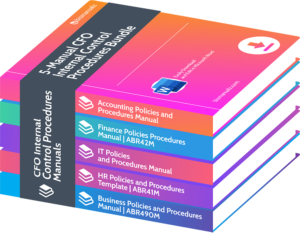What are CFO Cost Reduction Strategies?

In today’s rapidly changing business landscape, company executives face immense pressure to reduce costs without sacrificing quality. As a CFO, you play a crucial role in driving cost reduction strategies to help your company stay competitive. But with so many options and varying opinions, it can be overwhelming to determine the most effective approach. Let’s explore some key considerations and practical tips to guide you. You can’t afford to miss this. What are CFO Cost Reduction Strategies?
What is the Role of a CFO Cost Reduction Strategies?
The role of CFO cost reduction is crucial in an organization. They have various responsibilities, including:
- Identifying cost-saving opportunities
- Budgeting and forecasting
- Negotiating contracts
- Implementing efficiency measures
- Monitoring performance
Through strategic planning, financial analysis, and operational decision-making, CFOs play a critical role in managing costs and contributing to the financial health and success of the organization.
How Can a CFO Identify Areas for Cost Reduction?
To identify areas for cost reduction, a CFO can follow these steps:
- Conduct a thorough analysis of existing expenses and financial data.
- Engage with department heads and managers to understand their specific needs and challenges.
- Review procurement processes and negotiate better deals with suppliers.
- Explore opportunities for automation and technology implementation to streamline operations.
- Analyze staffing levels and productivity to identify areas of potential improvement or restructuring.
- Assess overhead costs and identify areas where expenses can be reduced without compromising quality.
One CFO successfully identified cost reduction opportunities by implementing these steps at a manufacturing company. By analyzing expenses, negotiating with suppliers, and streamlining processes, the company was able to achieve significant cost savings and improve financial performance.
What Skills Should a CFO Possess to Implement Cost Reduction Strategies?
In order to effectively implement cost reduction strategies, a CFO must possess a specific set of skills. These include financial acumen, analytical abilities, and strategic thinking. It is essential for them to have a thorough understanding of financial statements and the ability to identify areas of inefficiency and potential cost savings.
Additionally, strong communication and leadership skills are crucial as they will need to engage and motivate employees throughout the cost reduction process. A CFO should also possess negotiation skills to effectively collaborate with suppliers and manage contracts.
Lastly, they should be adaptable and open to utilizing technology to streamline processes and reduce costs. It is important for a CFO to continuously learn and stay updated on industry trends in order to enhance their ability to implement effective cost reduction strategies.
What are the Key Cost Reduction Strategies
As a CFO, one of your primary responsibilities is to ensure that your company’s finances are in order. This includes finding ways to reduce costs and increase profitability. In this section, we will discuss the key cost reduction strategies that every CFO should know.
From implementing lean management principles to utilizing technology, we will explore various methods that can help your company cut costs and improve its bottom line. Let’s dive into the details of these strategies and how they can benefit your organization.
1. Implementing Lean Management Principles
Implementing lean management principles is an essential strategy for CFOs to reduce costs. To successfully implement these principles, follow these steps:
- Identify waste: Analyze business processes to identify areas of inefficiency and waste.
- Streamline processes: Simplify processes to eliminate unnecessary steps and improve efficiency.
- Reduce inventory: Utilize inventory management techniques, such as just-in-time, to minimize excess inventory.
- Empower employees: Encourage employee involvement and empowerment to drive continuous improvement.
- Implement visual management: Utilize visual cues to help employees quickly identify and address problems.
To effectively implement lean management principles, CFOs should provide training and support to employees, continuously monitor progress, and foster a culture of continuous improvement. By adopting lean management, companies can significantly reduce costs and improve overall efficiency.
2. Negotiating with Suppliers
Negotiating with suppliers is a crucial aspect of cost reduction for CFOs. Here are some steps to guide the negotiation process:
- Identify key suppliers: Determine which suppliers have the highest impact on costs and prioritize negotiations with them.
- Research market prices: Gather information on current market prices to have a benchmark for negotiation.
- Prepare negotiation strategies: Develop a clear understanding of your company’s needs and objectives, and plan negotiation strategies accordingly.
- Establish relationships: Cultivate strong relationships with suppliers based on trust and open communication.
- Explore alternatives: Consider alternative suppliers or materials to diversify options and gain leverage in negotiations.
- Negotiate terms: Discuss pricing, discounts, payment terms, and other factors that can lead to cost savings.
- Monitor and review: Continuously monitor supplier performance and renegotiate contracts periodically to ensure ongoing cost reductions.
A CFO successfully negotiated new contracts with key suppliers, resulting in a 15% reduction in costs. By establishing open communication and exploring alternative options, the company was able to secure better pricing and more favorable payment terms. The CFO’s strategic negotiation approach and ongoing monitoring of supplier performance contributed to sustained cost reductions, improving the company’s financial health.
3. Streamlining Business Processes
Streamlining business processes is crucial for reducing costs and increasing operational efficiency. Here are the necessary steps to achieve this:
- Analyze the current processes to identify any inefficiencies and bottlenecks.
- Standardize and simplify the processes to eliminate any unnecessary steps.
- Automate manual tasks using technology solutions.
- Implement cross-functional collaboration to improve communication and coordination.
- Train employees on the streamlined processes and provide resources for continuous improvement.
By streamlining business processes, CFOs can effectively reduce costs, increase productivity, and improve overall organizational effectiveness.
4. Utilizing Technology to Reduce Costs
To effectively reduce costs, CFOs can incorporate technology in the following ways:
- Automating processes: By implementing digital solutions such as robotic process automation (RPA), repetitive tasks can be streamlined, human error can be reduced, and time and labor costs can be saved.
- Implementing cloud-based systems: Moving operations to the cloud can decrease infrastructure costs, increase scalability, and improve data security.
- Utilizing data analytics: By utilizing advanced analytics tools, CFOs can gain valuable insights into financial data, identify opportunities for cost-saving, and make data-driven decisions.
- Adopting digital payment methods: Switching to electronic payments and online banking can lower transaction costs, enhance cash flow management, and improve efficiency.
- Implementing remote work solutions: Embracing remote work arrangements and tools can decrease office space expenses, increase employee productivity, and provide flexibility.
What are the Potential Challenges for CFOs in Implementing Cost Reduction Strategies?
As companies strive to remain competitive, cost reduction strategies have become a crucial aspect of financial management. However, implementing these strategies is not without its challenges, especially for CFOs who play a key role in decision-making.
In this section, we will discuss the potential challenges that CFOs may face when implementing cost reduction strategies. These include resistance from employees, finding a balance between cutting costs and maintaining quality, and managing cash flow and investments. Let’s delve deeper into each of these challenges and how they can impact a CFO’s responsibilities.
1. Resistance from Employees
When implementing cost reduction strategies, CFOs may encounter resistance from employees. To address this challenge, here are some steps to consider:
- Communication: Clearly communicate the reasons and benefits behind the cost reduction initiatives to gain employee buy-in.
- Engagement: Involve employees in the decision-making process, asking for their ideas and suggestions.
- Training and support: Provide necessary training and resources to help employees adapt to any changes resulting from cost reduction efforts.
- Incentives: Consider offering incentives or rewards to motivate employees to actively support and participate in cost reduction initiatives.
- Continuous feedback: Regularly provide feedback on the progress and impact of cost reduction efforts, recognizing and acknowledging employee contributions.
By following these steps, CFOs can help overcome resistance from employees and foster a culture of cost-consciousness within the organization.
2. Balancing Cost Reduction with Maintaining Quality
Maintaining a balance between cost reduction and maintaining quality is crucial for CFOs. They must implement strategies that reduce expenses without compromising the quality of products or services. Here are steps CFOs can take to achieve this balance:
- Conduct a thorough analysis of cost reduction opportunities to identify areas where expenses can be reduced without affecting quality.
- Implement lean management principles to streamline processes and eliminate waste, ensuring that cost reduction efforts do not impact the efficiency or effectiveness of operations.
- Collaborate closely with suppliers to negotiate favorable contracts and pricing terms, seeking cost savings while ensuring the delivery of high-quality materials or services.
- Invest in technology solutions that can automate processes, increase productivity, and reduce costs without compromising quality.
- Continuously monitor and evaluate the impact of cost reduction strategies on quality, making any necessary adjustments to maintain the desired balance.
3. Managing Cash Flow and Investments
Managing cash flow and investments is a crucial aspect for CFOs when implementing cost reduction strategies. Here are some steps to effectively manage cash flow and investments:
- Analyze current cash flow: Assess the company’s cash inflows and outflows to identify areas of improvement.
- Implement cash flow forecasting: Develop a comprehensive forecast to anticipate future cash needs and potential shortfalls.
- Optimize working capital: Review inventory levels, accounts receivable, and accounts payable to ensure efficient cash management.
- Invest wisely: Evaluate investment opportunities and prioritize those that align with the company’s financial goals and risk tolerance.
- Monitor and control expenses: Continuously track expenses and identify areas where costs can be reduced or eliminated.
Pro-tip: Regularly review and update your cash flow and investment management strategies to adapt to changing market conditions and ensure long-term financial stability.
Frequently Asked Questions

1. What are cost reduction strategies and why are they important for a CFO to know?
Cost reduction strategies are methods used by companies to decrease their overall expenses and increase profitability. They are important for a CFO to know because managing costs is a crucial aspect of financial management and can greatly impact the company’s bottom line.
2. What factors should a CFO consider when implementing cost reduction strategies?
When implementing cost reduction strategies, a CFO should consider the company’s overall financial goals, the current economic climate, and any potential risks or challenges that may arise. It is also important to assess the impact of cost-cutting measures on various departments and stakeholders within the company.
3. How can a CFO determine which cost reduction strategies are most effective for their company?
A CFO should conduct a thorough analysis of the company’s current expenses and identify areas where costs can be reduced without compromising the quality of products or services. They can also seek input from department heads and conduct a cost-benefit analysis to determine the most effective strategies.
4. What are some common cost reduction strategies that CFOs can implement?
Some common cost reduction strategies include renegotiating contracts with vendors, implementing lean manufacturing processes, streamlining operations, reducing employee benefits, and utilizing technology to automate processes. It is important for a CFO to choose strategies that align with the company’s goals and do not negatively impact the company’s reputation.
5. How can a CFO measure the success of cost reduction strategies?
A CFO can track the company’s financial performance before and after implementing cost reduction strategies to measure their effectiveness. They can also compare the company’s financial data with industry benchmarks and conduct regular reviews to ensure that the strategies are sustainable and yielding positive results.
6. Are there any potential risks or challenges associated with implementing cost reduction strategies?
Yes, there are potential risks and challenges that a CFO should be aware of when implementing cost reduction strategies. These may include resistance from employees, short-term impacts on productivity, and potential legal or ethical concerns. It is important for a CFO to carefully assess and mitigate these risks before implementing any cost-cutting measures.
















Leave a Reply